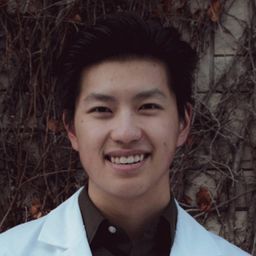CAPOS AWARD WINNER - Utilization and barriers to eye care services following school-wide implementation of pediatric vision screening
Mon statut pour la session
Authors: Patrick Wang, Sonya Bianchet, Megan Carter,
Christine Law.
Author Disclosure Block: P. Wang: None. S. Bianchet: None. M. Carter: None. C. Law: None.
Abstract Body:
Purpose: To
examine screening results/trends and identify barriers to accessing
optometry care from various schools and communities within our region in the 2018/19
and 2019/20 school years.
Study Design: Retrospective collection of vision screening data and
follow-up cross-sectional phone survey.
Methods: Vision screening data (HOTV, Randot, Autorefractor) was
collected for the 2018-2019 and 2019-2020 school years; data for 2019-2020 was
incomplete due to COVID. Data was linked to demographic data recorded prior by
public health. Schools were categorized according to pre-defined dental
screening risk. A stratified random sample of children with a “refer” screening
result and an equivalent sample of those receiving a “pass” were followed-up by
phone call. Phone follow-up was conducted to determine whether an optometry
visit occurred, glasses were prescribed, and potential barriers to accessing
eye-care. Quantitative data was analyzed using descriptive statistics along
with Chi-squared and t-tests for comparison.
Results: Out of the 1127 screened children in the sample, 363 children
(32.2%) were identified as “refer” and 764 (67.8%) were identified as “pass”
and the average age of children screened was 6.11 years. Overall, the referral
rate varied across school risk with 26.2%, 32.8% and 50.8% of low, medium, and
high-risk schools, respectively, X2 (2, N = 1127) = 29.94, p
< .005. A total of 501 families screened (252 refers and 249 passes) were
followed-up by phone call, of which 158 responded (93 refers and 65 passes). Of
the referred children, 69.9% (n=65/93) sought follow-up with an eye-care
specialist and of these, 33.8% were prescribed glasses (n=22/65). Of children
referred and who sought follow-up care (n=65), 43.1%, 46.1, and 10.8%, were
from low, medium, and high-risk schools, respectively. The most frequently
reported barriers were related to insufficient insurance coverage for
eye-care/glasses (n=12), COVID-19 related (n=14), and scheduling conflicts
(n=9).
Conclusions: Overall screening resulted in a 32.2% referral rate within
our region. Follow-up phone calls revealed a high proportion of children sought
out follow-up care after being referred. Despite universal, province-wide,
yearly pediatric eye exam coverage, children at high-risk schools are more
frequently referred and less often seek care once informed. While
implementation of a school-wide vision screening program is a step in the right
direction, considerations into implementing follow-up for refers from higher
risk schools and underserved communities may be warranted.
